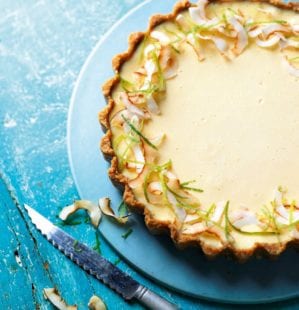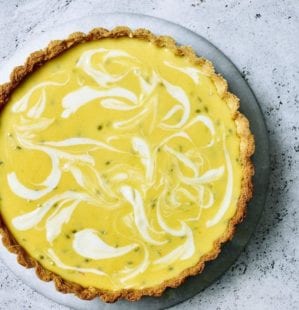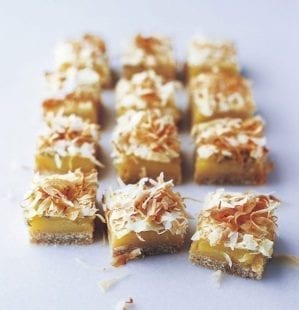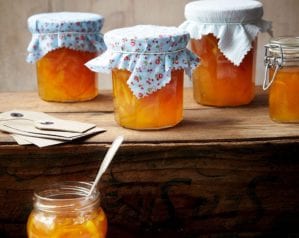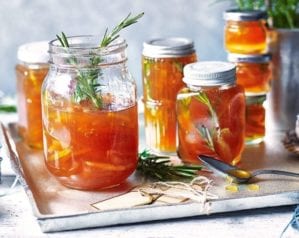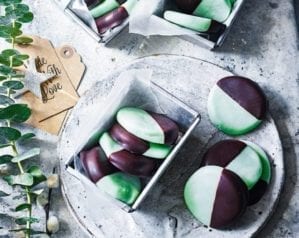
Lime marmalade
- Published: 15 Mar 23
- Updated: 25 Mar 24
During citrus season, instead of seville orange marmalade, why not try something a little more peppy such as this zingy lime marmalade recipe? Recipe writer Cherie Denham thinks it will become a staple in your storecupboard too…
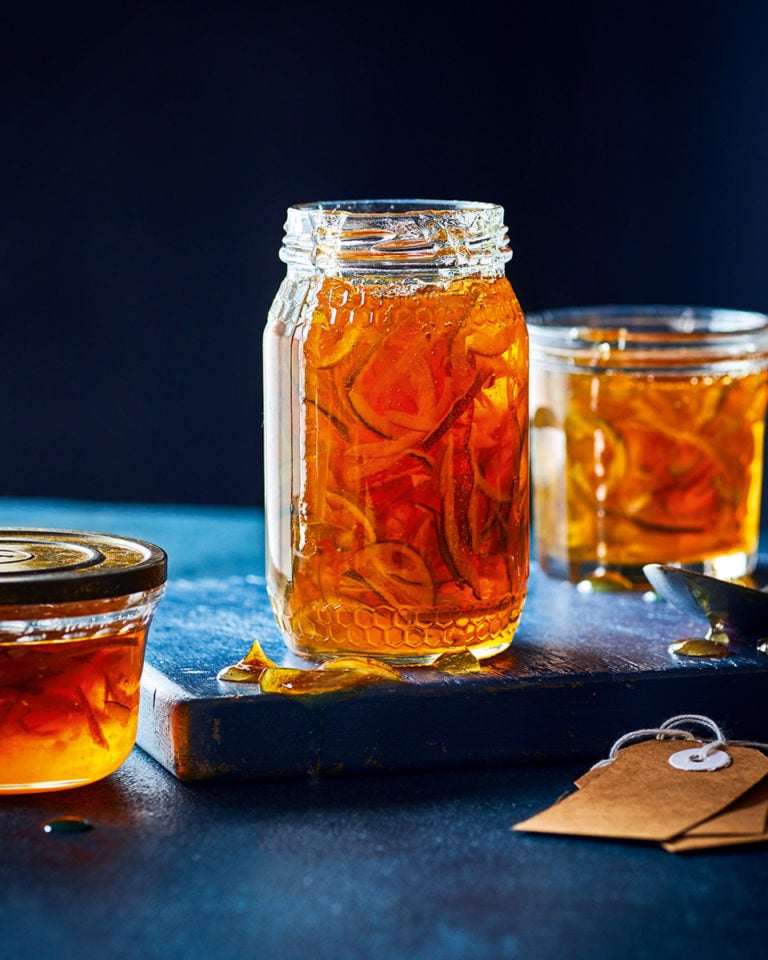
Perhaps surprisingly, homemade lime marmalade has a golden colour – this is due to caramelisation and oxidation in the preserving process. Find more marmalade recipes here.
-
Makes 4-5 regular jars
-
Hands-on time 20 min, plus overnight soaking, simmering time 1 hour 15-40 min
Ingredients
- 650g limes (about 8)
- 2 lemons
- 1.5kg granulated sugar
Specialist kit
- Muslin cloth
- Kitchen string
- Sugar or jam thermometer
- Preserving pan or deep heavy-based pan
Method
- Halve all the fruit and squeeze out the juice. Pour the juice into a large jug on your scales and top up to 2 litres (2 kilograms) with cold water.
- Put all the fruit pips in a bowl lined with a piece of muslin. Using a teaspoon or a knife, scrape the membrane/pith out of the fruit skins, roughly chop in a food processor or by hand, then add to the pips. Tie the muslin with kitchen string to make a bag, then set aside.
- Slice the lemon and lime skins into thin, medium or thick shreds, depending on what you prefer in your marmalade, then add to the pan (use a food processor if you wish).
- Pour the juice/water into the preserving pan and push the muslin bag down into the peel and liquid. Cover and leave to soak overnight to help soften the shreds.
- The next day, slowly bring the pan to the boil, then reduce the heat and simmer gently for 45 minutes to 1 hour until the peel is very soft. If you don’t have a sugar thermometer or if you want to be doubly sure of a set, put a couple of small plates in the freezer (see Cherie’s tips, right).
- Lift the muslin bag from the pan and leave to cool in a bowl for 10 minutes or until cool enough to handle.
- Add the sugar to the pan and stir until completely dissolved. Squeeze the muslin bag well, so every last bit of pectin drips back into the pan. Discard the muslin and its contents.
- Bring the liquid to the boil, skimming off the scum and froth as you go (see Cherie’s tips). Boil for 30-40 minutes or until the setting point is reached. It should read 105oC on a sugar or jam thermometer. To test for a set, put a teaspoon of the marmalade on one of the cold plates from the freezer (see Cherie’s tips). Return it to the freezer for a couple of minutes to cool, then push it with your finger – if it wrinkles, it’s ready. If the marmalade hasn’t set, boil it for another 10 minutes or so, then test again.
- Remove the pan from the heat and give the marmalade one last skim. Leave to stand for 15 minutes – this ensures the peel is evenly distributed throughout the preserve (see Tips).
- Ladle the marmalade into warm sterilised jars, cover with a wax disc, then seal with a lid. Label and store.
- Recipe from February 2022 Issue
Nutrition
- Calories
- 30kcals
- Carbohydrates
- 7.5g (7.5g sugars)
- Fibre
- 0.1g
delicious. tips
If you don’t have time to make marmalade while seville oranges are in season you can freeze them. But when you defrost them to make the marmalade, add another lemon to the recipe as freezing reduces the pectin levels (pectin makes the marmalade set).
Sterilising jars is important to stop your marmalade going mouldy. I put mine through a dishwasher cycle or wash them in warm, soapy water, rinse well and put in a 120°C fan/gas 1 oven until ready to fill.
Although I have a jam thermometer, I like to be doubly sure of a set, so I do the wrinkle test too. I put 2 small plates into the freezer at the start so I can test for the setting point as soon as I need to.
Make sure the peel is tender before adding the sugar or you may have tough shreds.
Boil the marmalade rapidly only once the sugar has dissolved and not before. Boiling it for too long spoils the colour and flavour.
It’s important to skim the scum off the marmalade to avoid it turning cloudy, but do it towards the end of the cooking time as continual skimming can be wasteful.
Leave the marmalade to stand, off the heat, for 15 minutes after setting point is reached to ensure the shreds are evenly distributed.
Fill your jars while they’re still warm (not hot) because hot marmalade will crack cold glass – but if the jars are too hot the shreds tend to rise to the top.
If the jars have drips on them, wipe with a clean damp cloth, then label when the marmalade is completely cold.
Store your marmalade in a cool, dry place– and remember to make enough to keep you going throughout the year…
Perhaps surprisingly, homemade lime marmalade has a golden colour – this is due to caramelisation and oxidation in the preserving process. Commercial lime marmalade often has colouring added to turn it green.
Buy ingredients online
Rate & review
Rate
Reviews
Subscribe to our magazine
Food stories, skills and tested recipes, straight to your door... Enjoy 5 issues for just £5 with our special introductory offer.
Subscribe
Unleash your inner chef
Looking for inspiration? Receive the latest recipes with our newsletter

